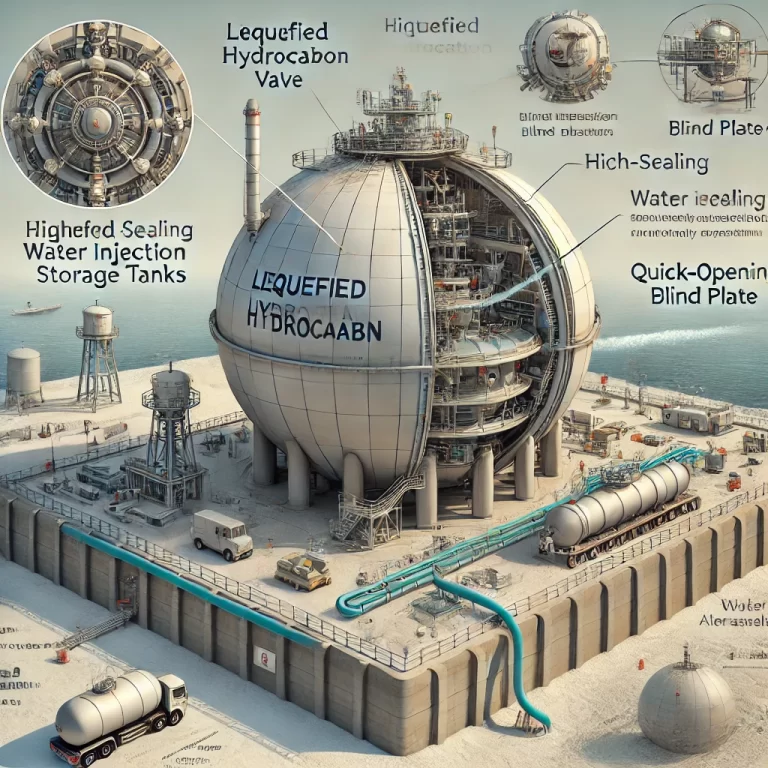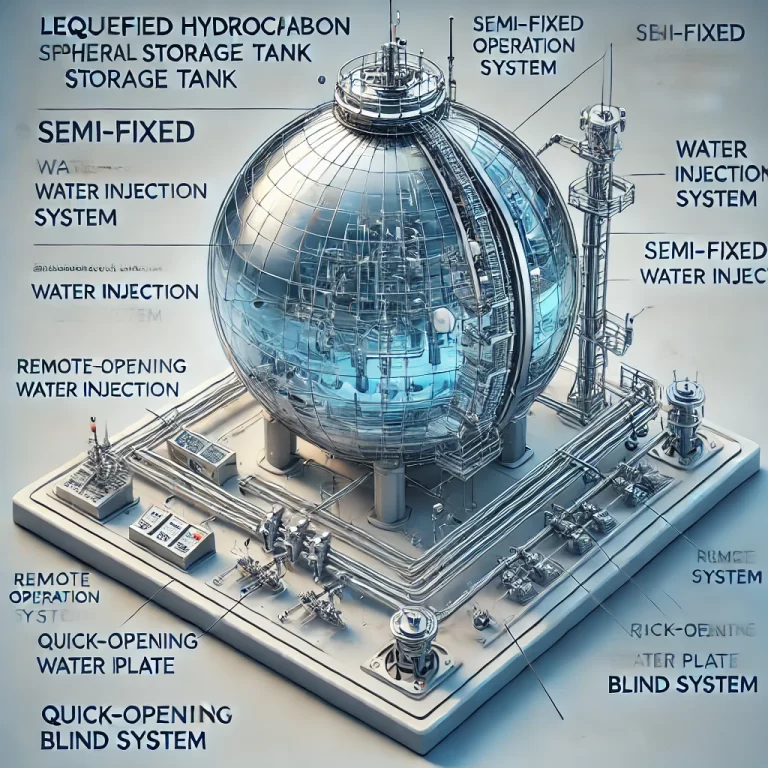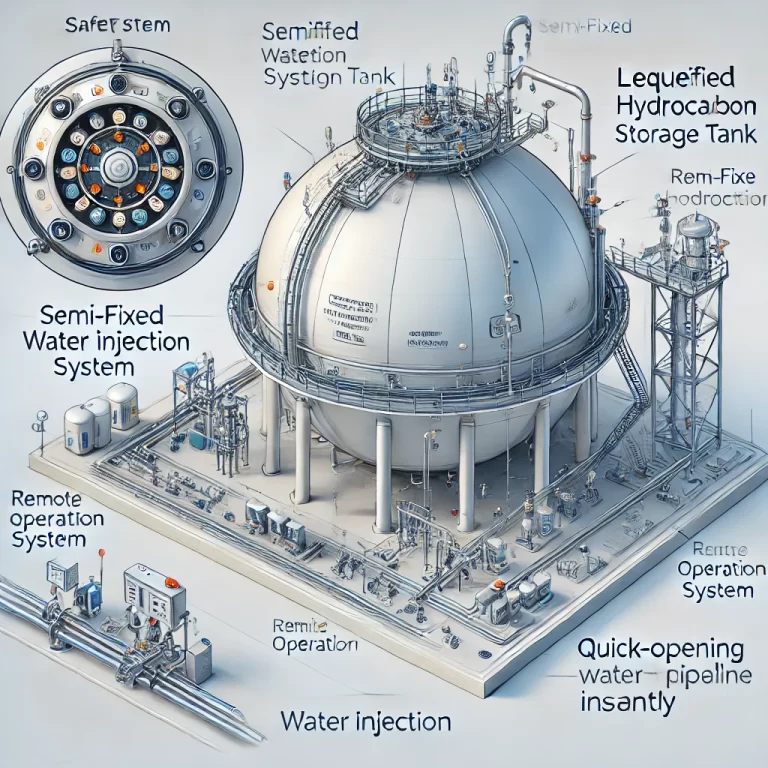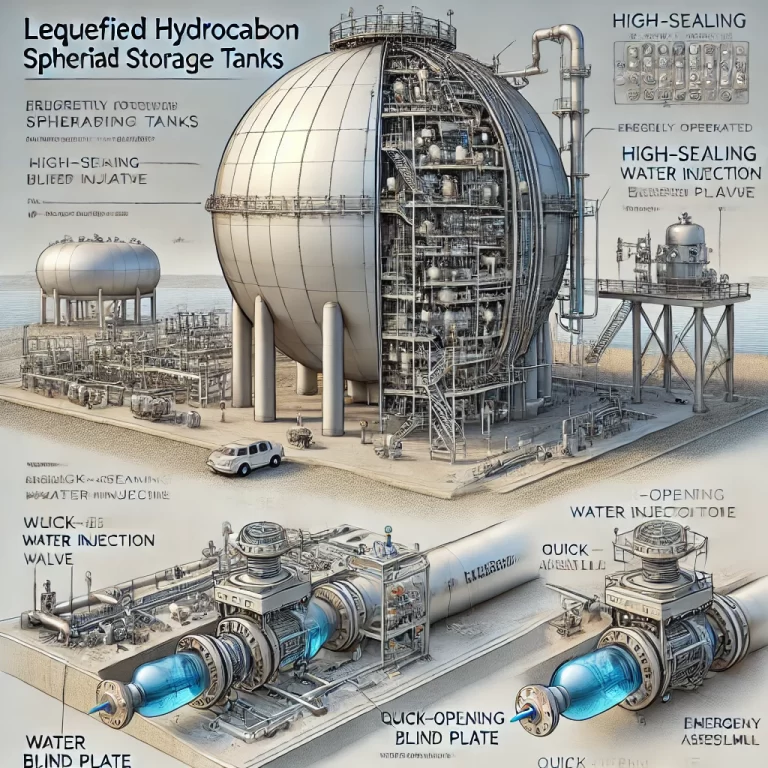In the safety design of liquefied hydrocarbon spherical tanks, the valve configuration of the water injection system and the prevention of medium backflow have long been contentious issues within the industry. In the absence of detailed standard specifications, how should we proceed? This article explores these questions based on actual engineering practices involving liquefied hydrocarbon spherical tanks.
1. Identification and Selection of the Water Injection Valve
1.1 Definition of the Water Injection Valve
The water injection valve is defined as the last valve to be opened during the water injection process. In many cases, companies employ semi-fixed water injection systems, requiring several preparatory steps such as connecting pipelines, starting upstream fire water pumps, and opening downstream valves. Only after completing these steps is the water injection valve opened to allow high-pressure firewater into the spherical tank.
1.2 Importance of Identifying the Final Valve
Emphasizing the “last valve to open” is critical because it directly separates the liquefied hydrocarbon medium from the firewater system. Its proper identification is key to preventing backflow risks.

2. Design and Configuration Requirements for the Water Injection Valve
2.1 Highest Sealing Performance
Since the water injection valve forms the first barrier against backflow, it must possess the highest level of sealing performance to prevent liquefied hydrocarbon leakage.
2.2 Proximity to the Tank Root
The valve must be positioned as close to the tank bottom as possible, for two reasons:
To ensure the shortest path for firewater to enter the tank quickly in an emergency.
To minimize the volume of liquefied hydrocarbon trapped within the downstream pipeline under normal conditions, reducing inherent risk.
2.3 Remote Operation Capability
Due to the high risk of rapid vaporization of leaked hydrocarbons and the resulting visibility and temperature hazards, the water injection valve must be operated remotely (either electrically or pneumatically). On-site manual operation is impractical and dangerous under leak scenarios.
2.4 Failure Mode Considerations
Given the need for remote actuation, failure modes must be carefully designed. Whether electrically or pneumatically actuated, loss of power or air supply could lead to operational failures. Therefore, the failure behavior of the water injection valve must be specifically addressed.

3. Selection of the Water Injection Valve Failure Mode
The failure behavior can be categorized into three modes:
Fail-Close
Fail-Open
Fail-Last Position (Fail-Set)
3.1 Fail-Close Mode Analysis
Normally, the water injection valve is closed. In case of a failure during a non-injection state, a fail-close response seems acceptable. However, during an ongoing emergency injection, a fail-close event would terminate water injection prematurely, worsening the risk. Thus, fail-close is not recommended.
3.2 Fail-Open Mode Analysis
Fail-open behavior would immediately expose the firewater system to liquefied hydrocarbon backflow, posing significant danger even if check valves are installed. Check valve leakage rates are non-negligible, making fail-open an unacceptable option.
3.3 Fail-Last Position Mode Analysis
Fail-set mode allows the valve to maintain its current position during a failure (open stays open, closed stays closed). This mode minimizes risk and aligns with the operational expectations. However, if a failure occurs when the valve must be switched (e.g., needing to inject water during a leak), inability to operate it would pose risks.
Recommended Solution:
Adopt fail-last position mode.
Implement immediate alarm and corrective measures upon valve failure detection.

4. Additional Measures to Prevent Liquefied Hydrocarbon Backflow
4.1 Pipeline Connection Type
Water injection pipelines can be either:
Fixed Connection: Permanent pipeline connection from firewater system to the tank.
Semi-Fixed Connection: A portion of the pipeline remains disconnected under normal conditions.
Semi-fixed systems offer an advantage: they allow early detection of backflow events, enabling quicker emergency responses. In contrast, fixed systems may mask backflow incidents until severe consequences arise.
4.2 Installation of Isolation Devices
For facilities that already use fixed connections and cannot easily retrofit, AQ 3059 Appendix A.7(d) advises installing blind flanges between the water and hydrocarbon pipelines.
However, standard blind plates hinder rapid emergency response due to:
Time-consuming manual removal.
Special work permits and approvals.
4.3 Use of Quick-Opening Blind Plates
Engineering solutions such as Quick-Opening Blind Plates (e.g., ONIS quick blinds) are ideal. These devices allow rapid mechanical switching between open and closed positions without disassembly, significantly improving emergency response times while maintaining separation integrity under normal conditions.
Key advantages include:
No need for special hot work permits.
Seamless, fast switching between blind and open states.
High stability and safety.

5. Conclusion
The design and management of the water injection system for liquefied hydrocarbon spherical tanks are highly complex. The challenges stem not only from the extreme danger of the stored medium but also from the inherent risks introduced by the emergency system itself.
Best Practices:
Precisely define and configure the water injection valve.
Design failure modes carefully, prioritizing fail-set with alarm mechanisms.
Prefer semi-fixed connections where possible.
Where fixed connections are unavoidable, equip the system with quick-opening blind plates.
Above all, a “one-tank-one-strategy” approach based on actual site conditions and risk analysis must be adopted, ensuring that both water injection functionality and backflow prevention are effectively achieved without compromise.
